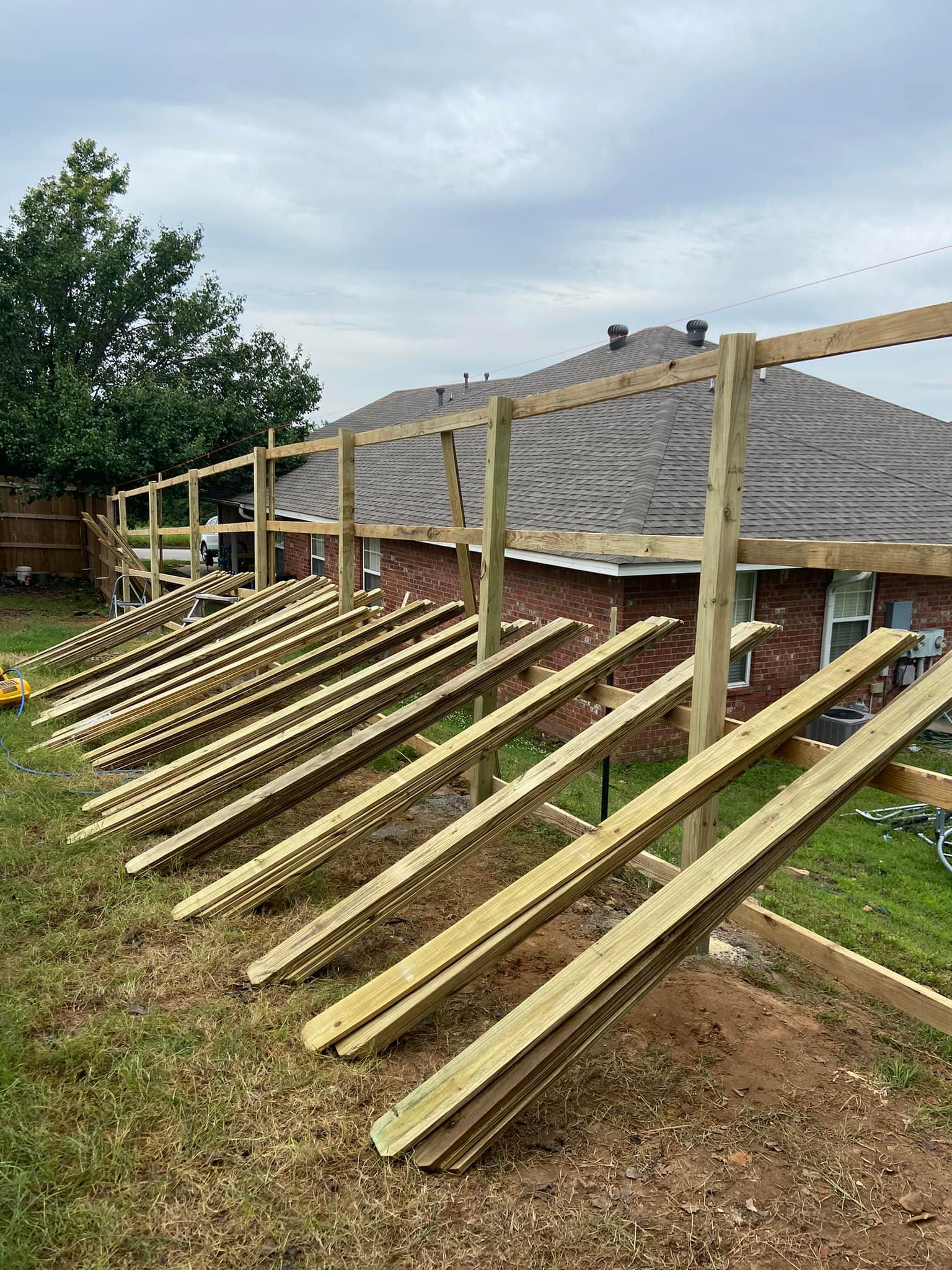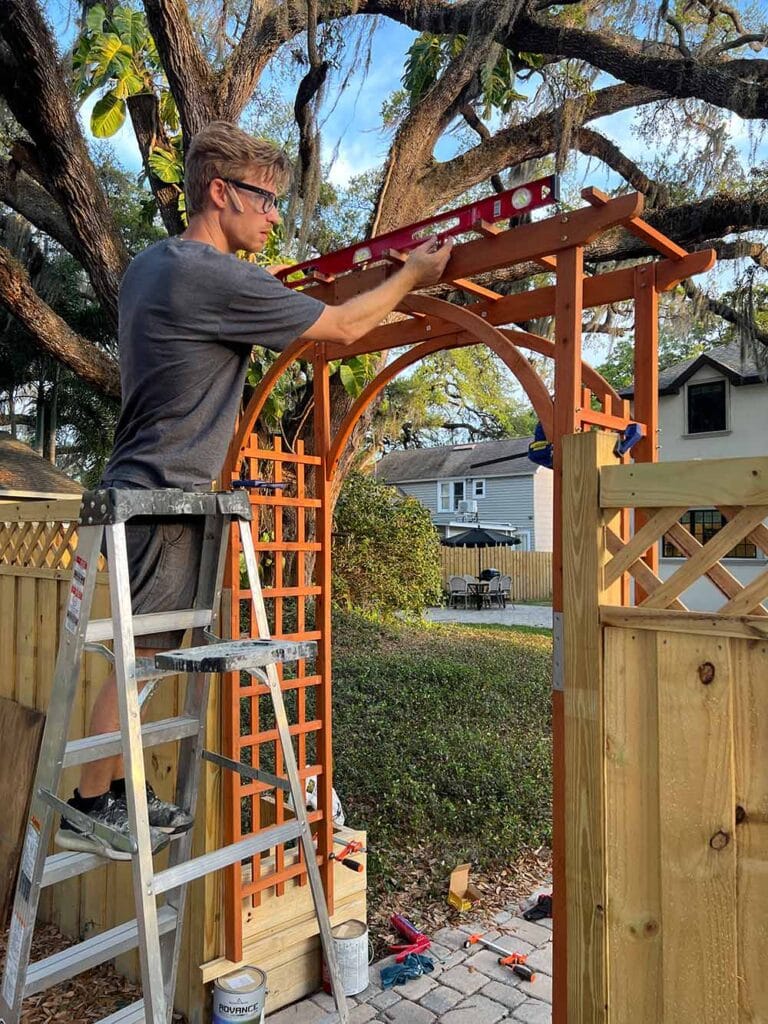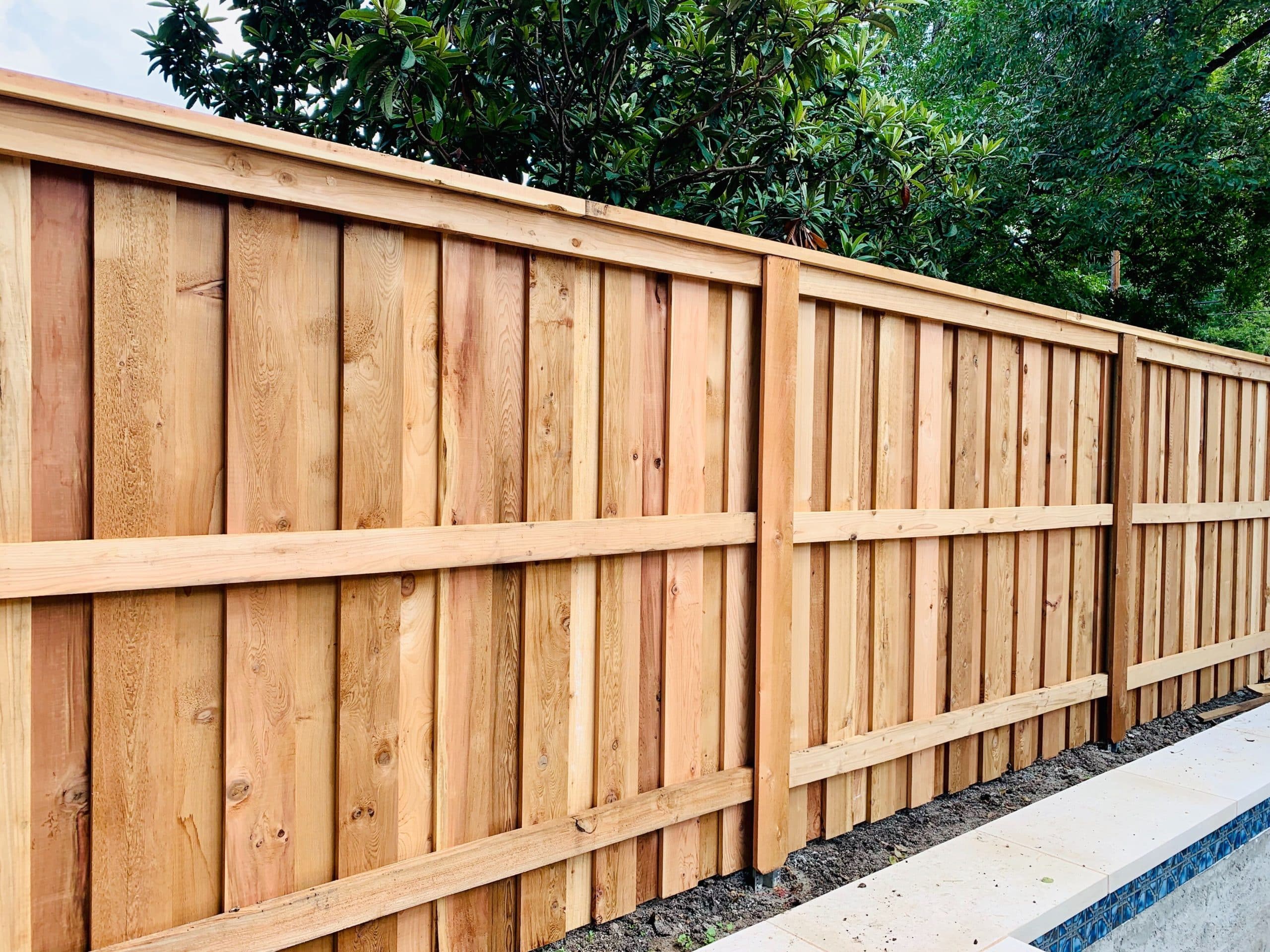High-Quality Wood Fences Fort Smith AR: Secure Your Property with Professional Installation
High-Quality Wood Fences Fort Smith AR: Secure Your Property with Professional Installation
Blog Article
Step-by-Step Guide to Mounting a Wood Fencing for Your Home or Home
Installing a timber fencing can significantly improve both the performance and visual appeal of your home. Understanding these actions not just makes sure a tough installation however also adds to long-lasting satisfaction.
Preparation Your Fencing Setup
When starting the installment of a timber fencing, cautious preparation is important to make certain an effective end result. Begin by analyzing the purpose of the fence-- whether it is for privacy, safety, or visual appeals-- considering that this will affect the style and format. Next, assess the residential property lines, taking care to verify the boundaries through a survey or title deed to avoid disputes with neighbors.
Consider regional zoning regulations and homeowners' association standards, as these might determine fencing elevation, style, and materials. It is suggested to obtain the essential licenses prior to beginning job, as this can prevent lawful difficulties later on.
In addition, consider the surface and soil conditions of your home. Irregular ground may need added modifications throughout installment, while rocky dirt might demand specialized tools.
Last but not least, produce a thorough strategy that includes dimensions, the variety of messages, and the spacing between them. A clear layout will certainly promote the setup procedure and make certain that you have actually all needed products accessible. By sticking to these planning steps, you can establish a solid foundation for a successful timber fencing installment.
Selecting the Right Materials
Selecting the suitable products for your timber fencing is important to guaranteeing durability and aesthetic charm. The most common types of timber made use of for secure fencing include cedar, redwood, and pressure-treated pine.
Pressure-treated ache is one more popular choice, as it is typically much more inexpensive. However, it calls for regular upkeep and treatment to prolong its life-span. When selecting timber, consider the climate of your area; as an example, locations with high humidity may profit from wood varieties with better resistance to wetness.
A picket fence may require different material requirements compared to a privacy fencing. By carefully selecting your materials, you can ensure that your timber fence will stand the examination of time while enhancing your home's landscape.
Preparing the Setup Site

Preparing the installment website is a vital action in making certain the effective building and construction of your timber fencing. Appropriate preparation not only helps with a smoother installation process but also adds to the long life and security of the fencing.

Next, evaluate the terrain. Eliminate any type of challenges such as rocks, origins, or debris that can hinder the installation procedure. Consider leveling it or readjusting your fencing design accordingly if your website has irregular ground. Additionally, look for underground energies by contacting your neighborhood utility firm. This is important to avoid damages throughout installation and ensure safety.
Mounting the Fence Posts

Next, dig openings for each article, guaranteeing they are deep enough-- typically one-third the elevation of the article over ground-- to provide stability. A depth of at the very least 2 feet is suggested for a lot of fencings. The size of the openings should be around 3 times the width of go to this site the messages.
Once your openings are prepared, area each blog post upright into the assigned hole. Make use of a degree to guarantee they are plumb, adjusting as necessary. After positioning, load the openings with concrete mix or packed soil for included assistance. Allow the concrete to heal according to the maker's instructions, generally 24 to 2 days. Properly set up messages are important for keeping the architectural stability of the fencing, ensuring it stays secure and upright versus environmental stresses.

Adding Fence Panels and Ending Up Touches
As soon as the fencing articles are securely established, the next step includes connecting the fence panels, which will define the boundaries of your residential property. Begin by positioning each panel between the messages, guaranteeing they are degree and straightened. Utilize a degree device to check that the panels are right; this will make sure a specialist surface. For optimum stability, safe and secure each panel to the blog posts utilizing galvanized screws or nails, which withstand rust and rust.
After all panels are affixed, evaluate the entire fence for any spaces or misalignments. Make adjustments as necessary to make certain a consistent look.
In addition, using a safety tarnish or sealant will improve the timber's longevity against weather condition components, lengthening the life of your fencing. Select a color that enhances your home and landscape for a cosmetically pleasing appearance. Lastly, check regional regulations for see this here any called for upkeep or updates to guarantee conformity with neighborhood criteria. With these steps, your wood fencing will not only offer its objective successfully however additionally enhance the general charm of your property.
Verdict
To conclude, the successful setup of a timber fence requires careful preparation, choice of suitable products, complete site prep work, and specific execution of installment strategies. Attention to information throughout each phase ensures architectural integrity and aesthetic allure. By sticking to the detailed actions, homeowner can improve aesthetic, safety, and privacy appeal, ultimately adding to the general value and functionality of the home. Appropriate maintenance post-installation additionally expands the life and look of the timber fencing.
When getting started on the installment of a wood fence, mindful planning is Visit Website important to ensure an effective result.Choosing the suitable materials for your wood fence is crucial to making certain durability and aesthetic allure. A picket fencing may call for different product specs compared to a privacy fence.With the installment website effectively prepared, the following step entails establishing the fence articles, which serve as the foundation of your timber fence.As soon as the fence blog posts are securely established, the following action entails attaching the fence panels, which will define the borders of your building.
Report this page